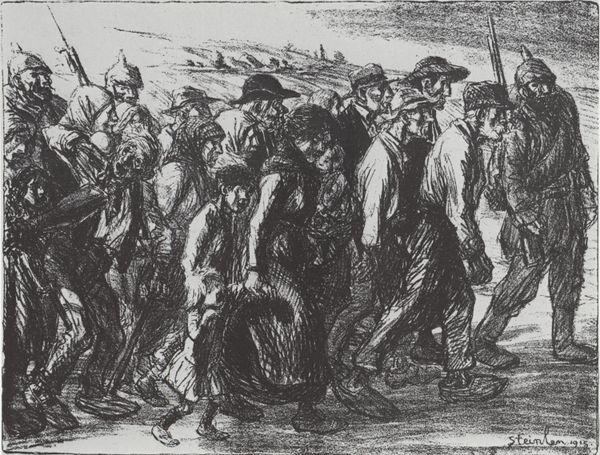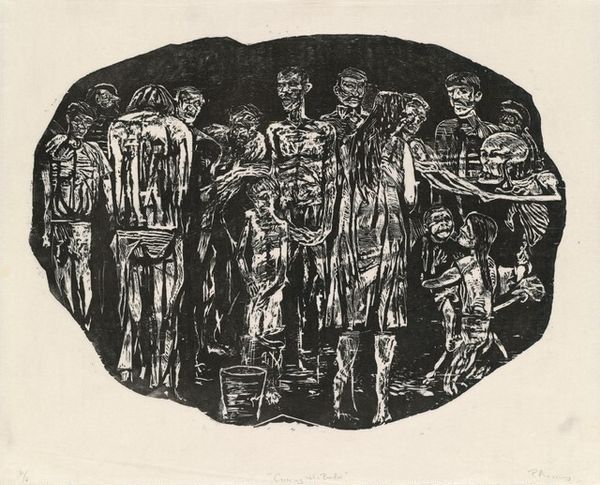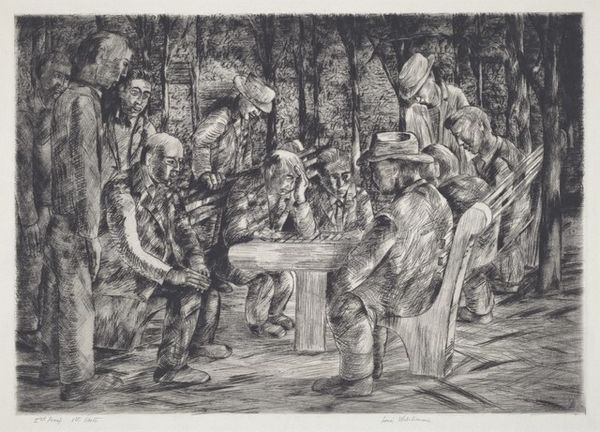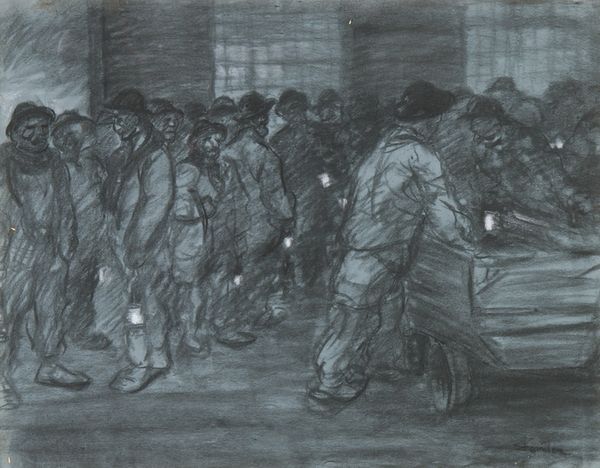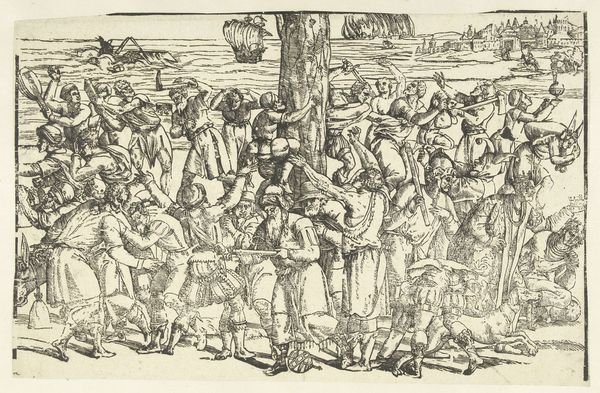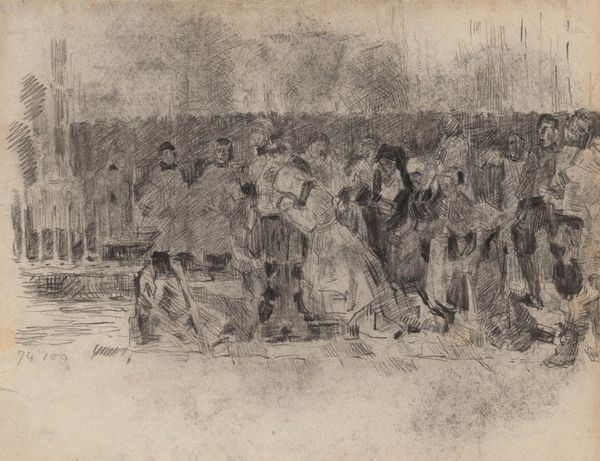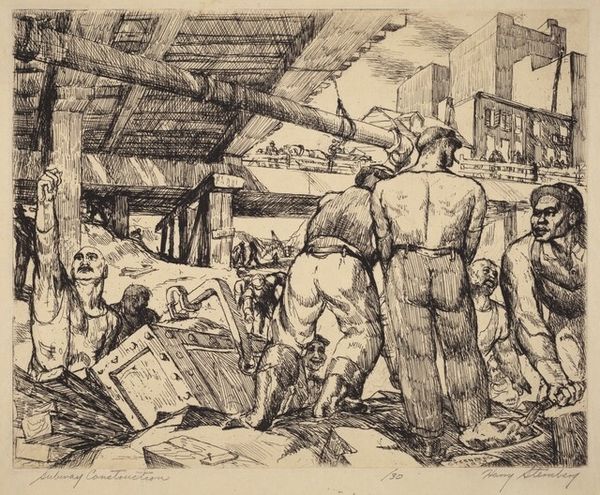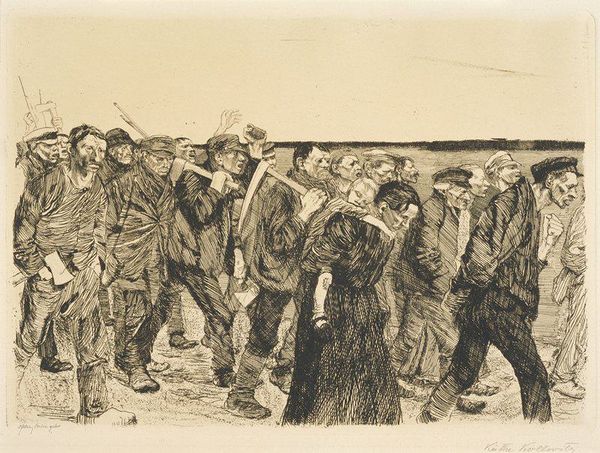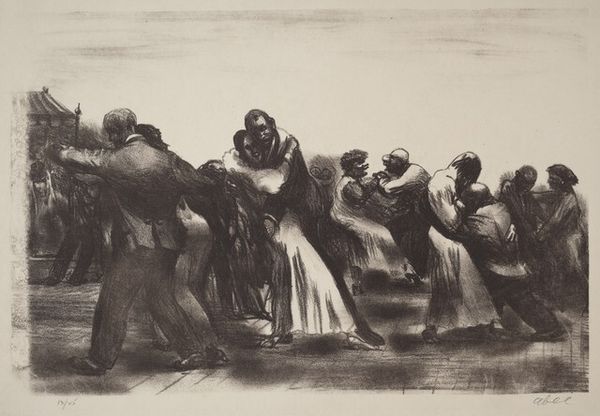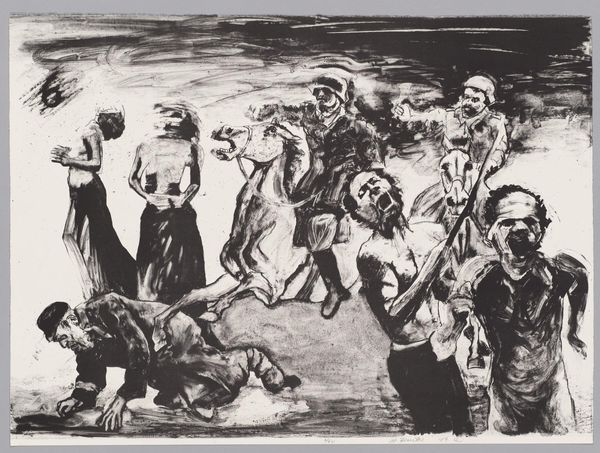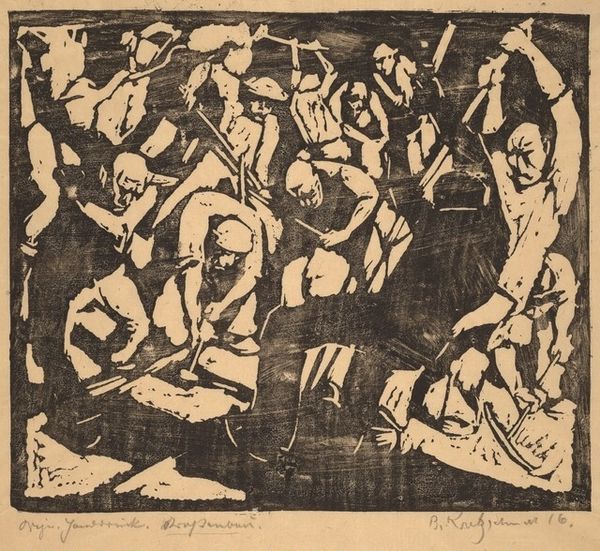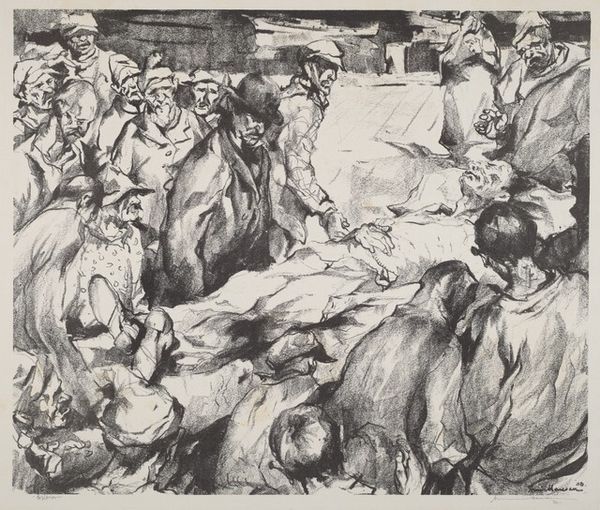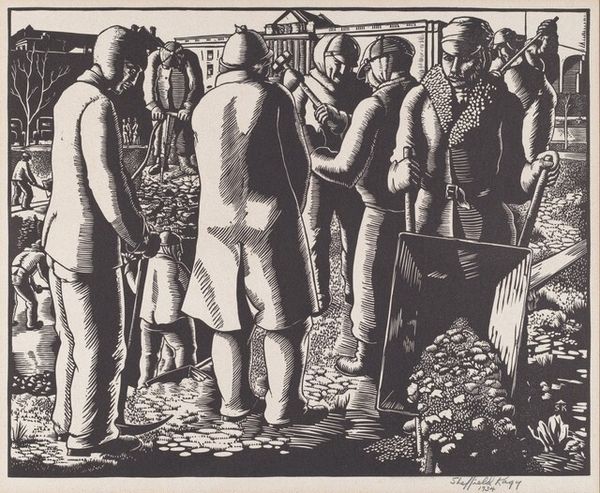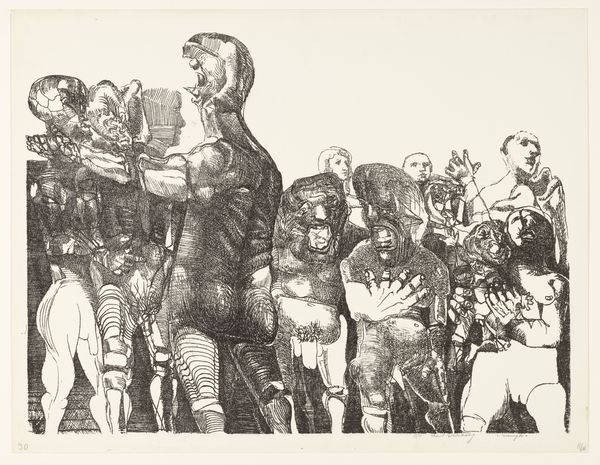
drawing, print, ink, charcoal
#
portrait
#
drawing
#
ink drawing
# print
#
pencil sketch
#
charcoal drawing
#
figuration
#
ink
#
pencil drawing
#
expressionism
#
charcoal
Copyright: Public domain
Editor: Today we're looking at "The Prisoners," a 1908 print by Käthe Kollwitz currently held at the British Museum. There's such a weight to this image; a mass of figures, heads bowed, and bound, somehow managing to evoke this sense of crushing despair and collective suffering. What strikes you when you look at this piece? Curator: Kollwitz made this piece during a particularly turbulent time in Germany's sociopolitical landscape. You can see her engagement with the Expressionist movement, but always filtered through a lens of intense social consciousness. Considering this, I would say she's commenting on the political climate itself. Where do we see that commentary taking shape visually, within the composition and subject matter of "The Prisoners"? Editor: Well, the sheer number of figures and their containment by what seems like barbed wire clearly evokes imprisonment on a grand scale. They appear trapped, dehumanized, reduced to this collective mass. Is Kollwitz perhaps implicating society as a whole in this act of imprisonment? Curator: Precisely! This is a powerful interpretation when considering the social responsibility often attributed to the artist by contemporary critics and scholars of Expressionism. What institutions uphold the systems of oppression that she illustrates? How do prisons work not just literally, but metaphorically, as a way to quell social unrest and enforce political conformity? Also, note Kollwitz's choice of printmaking, a medium that allowed her work to be widely disseminated, almost functioning as visual propaganda in social debates about criminal justice. Editor: It’s incredible to think about art functioning so directly as a catalyst for dialogue. It makes you wonder, what would Kollwitz make of today's world and its issues? Curator: Indeed. Kollwitz was actively investigating what imagery and its circulation can do to shift thinking. Considering that is crucial for any engagement with this artist and this work in particular.
Comments
No comments
Be the first to comment and join the conversation on the ultimate creative platform.
